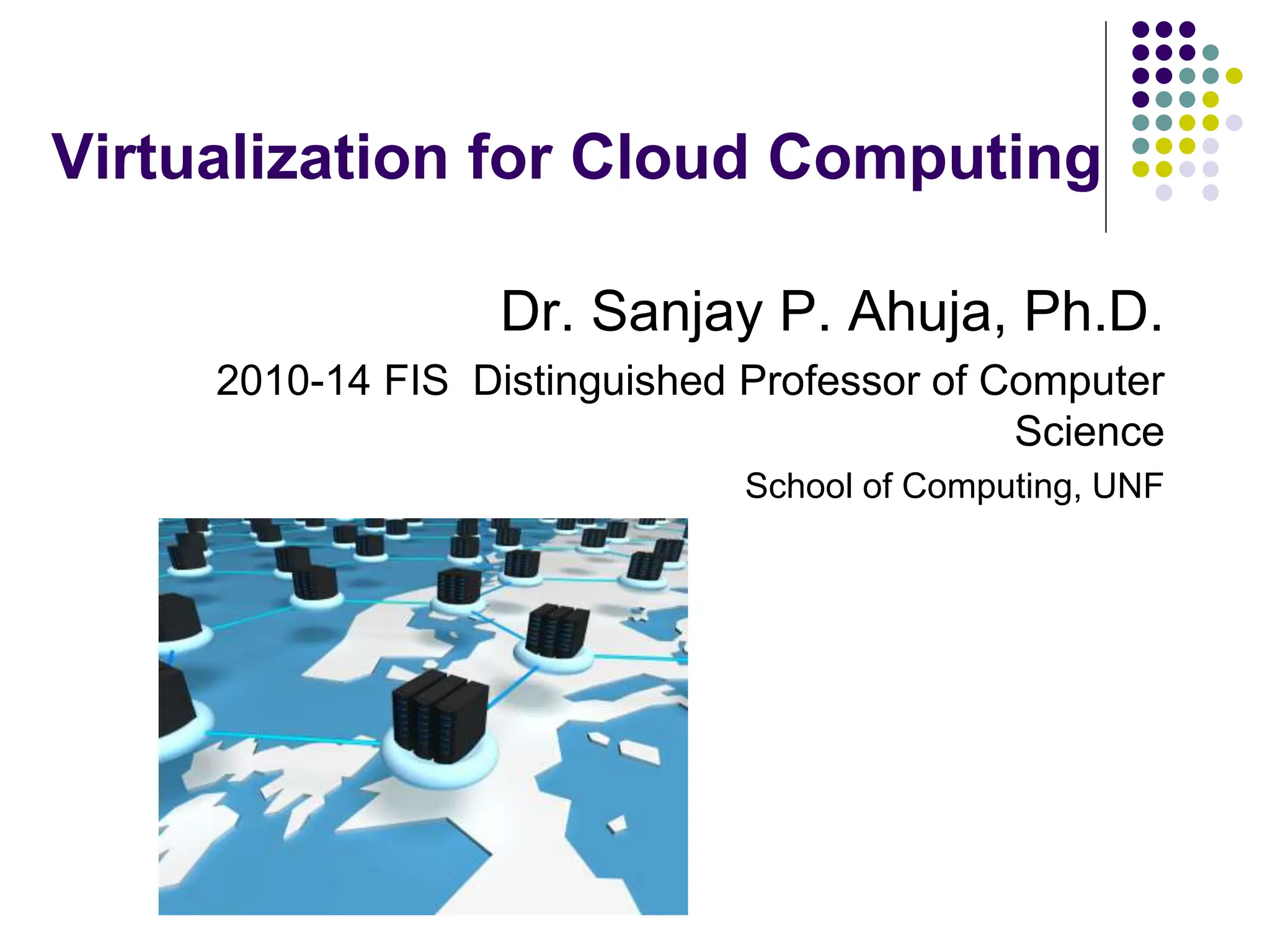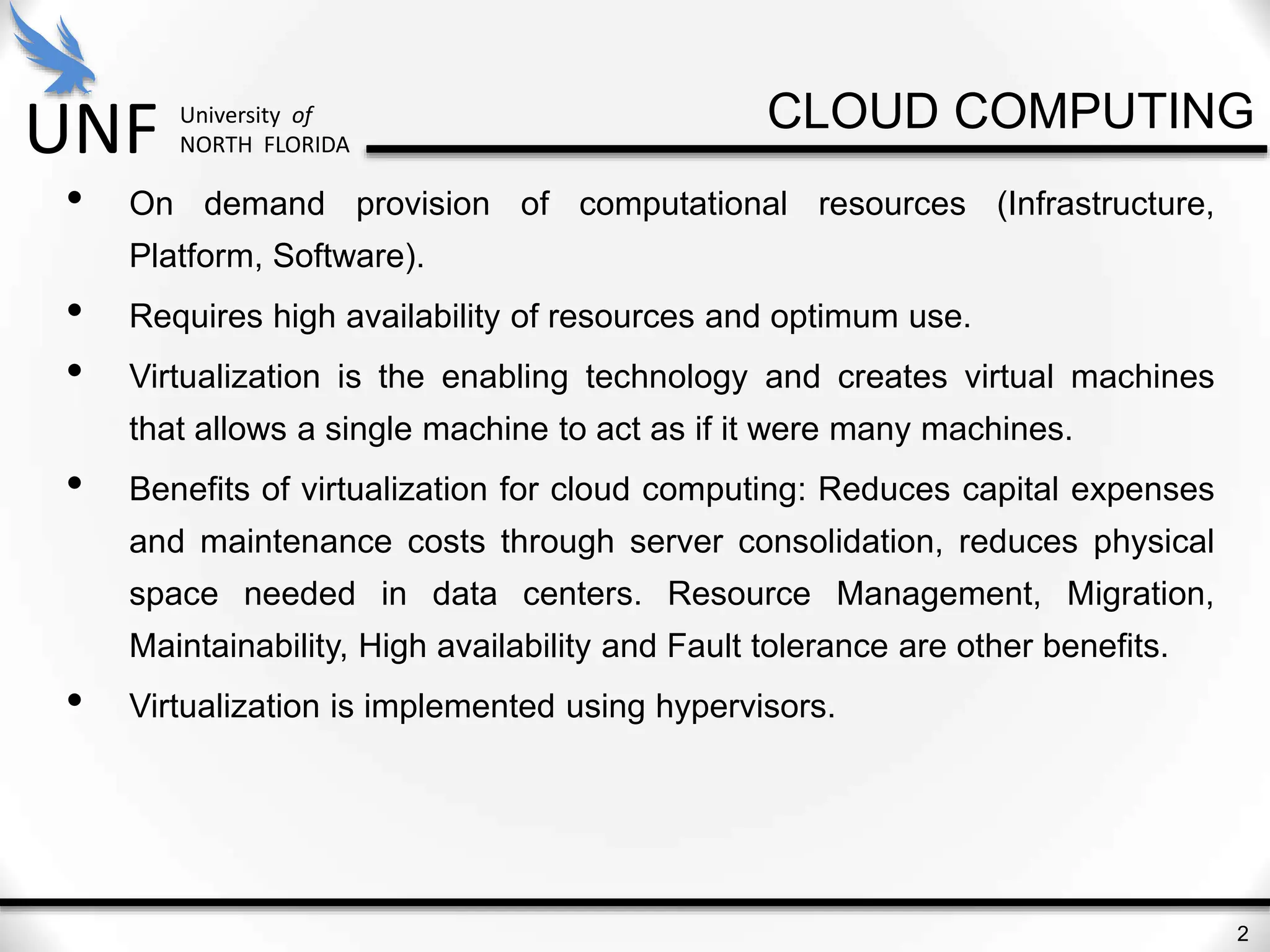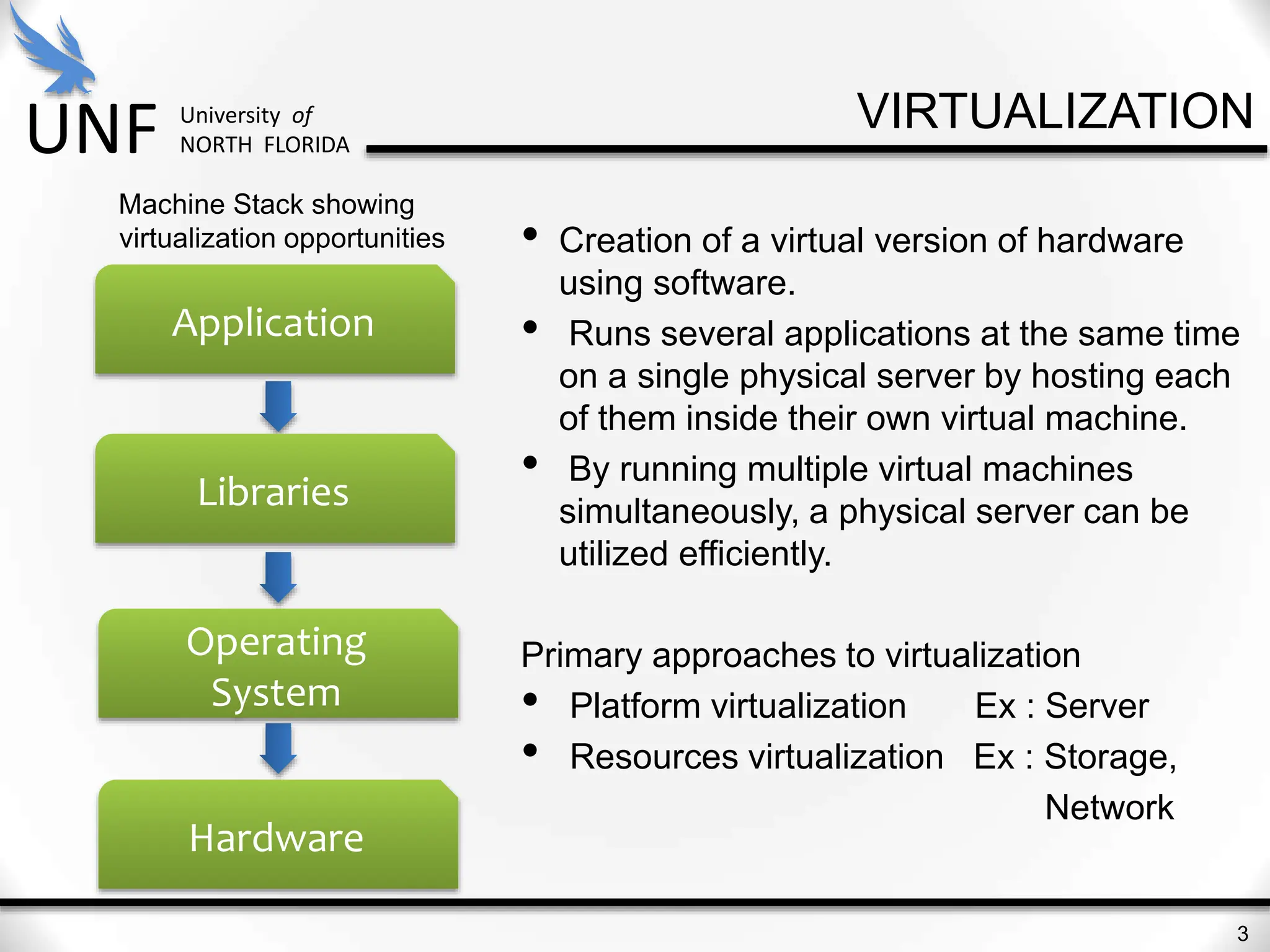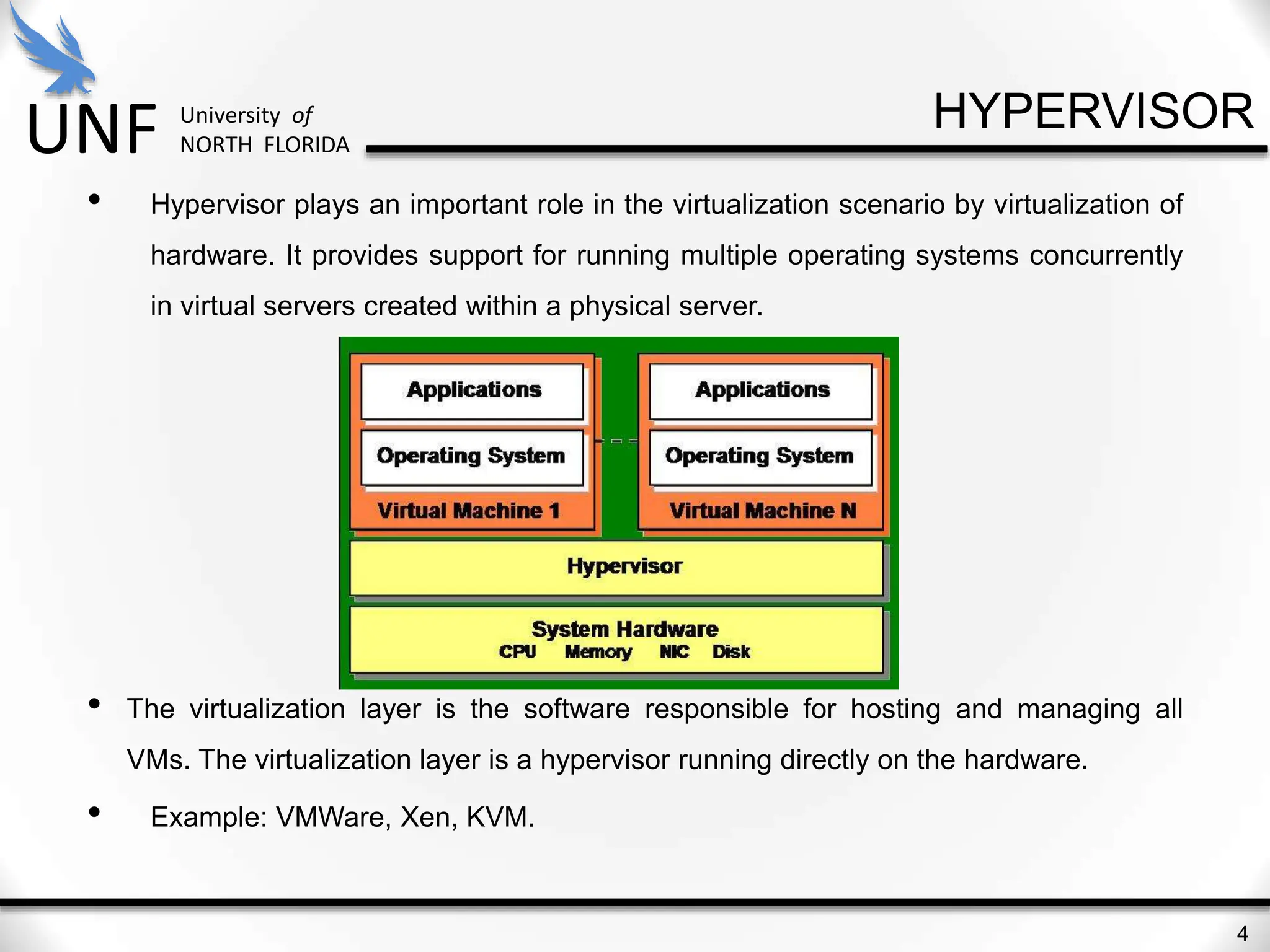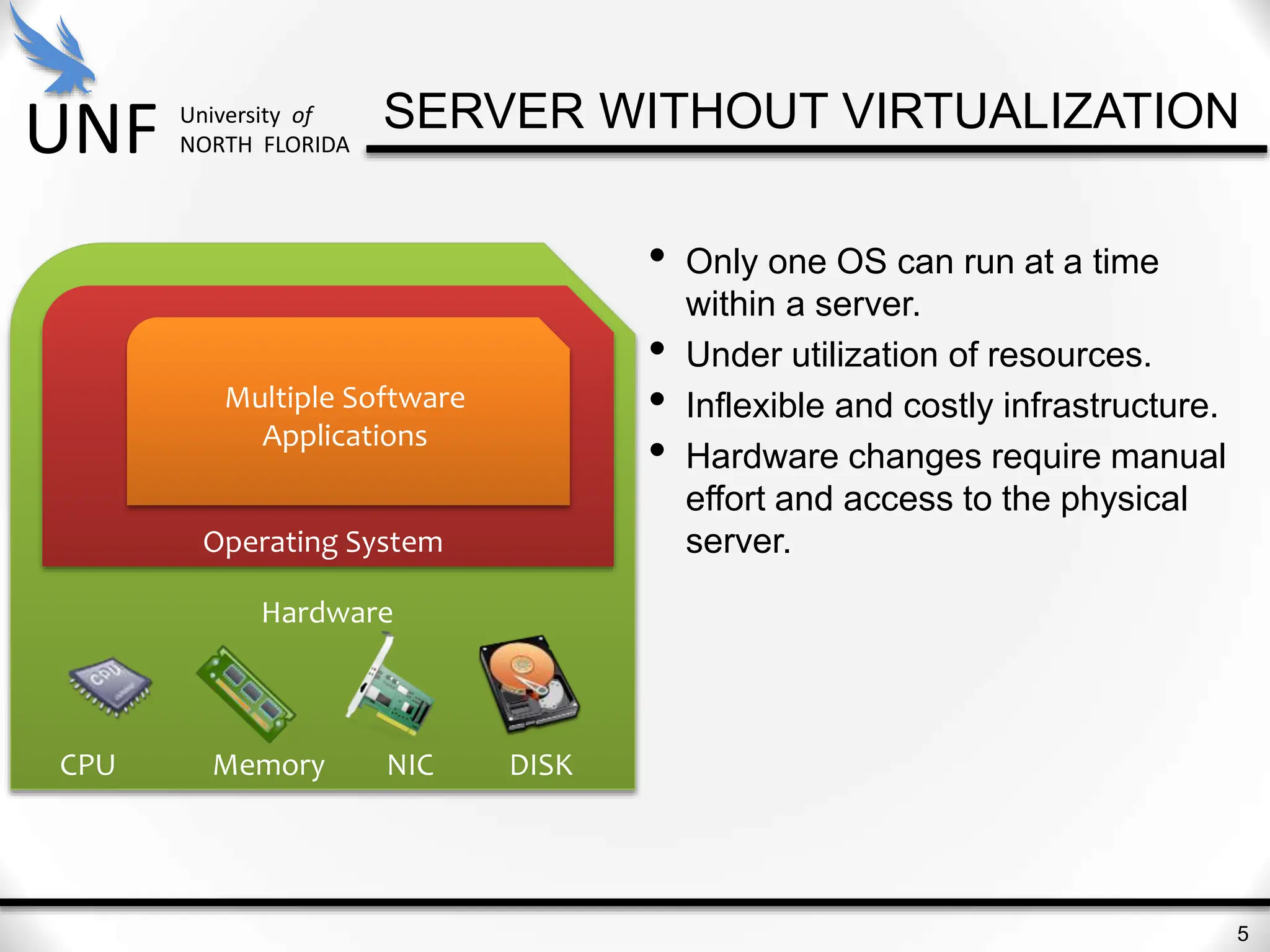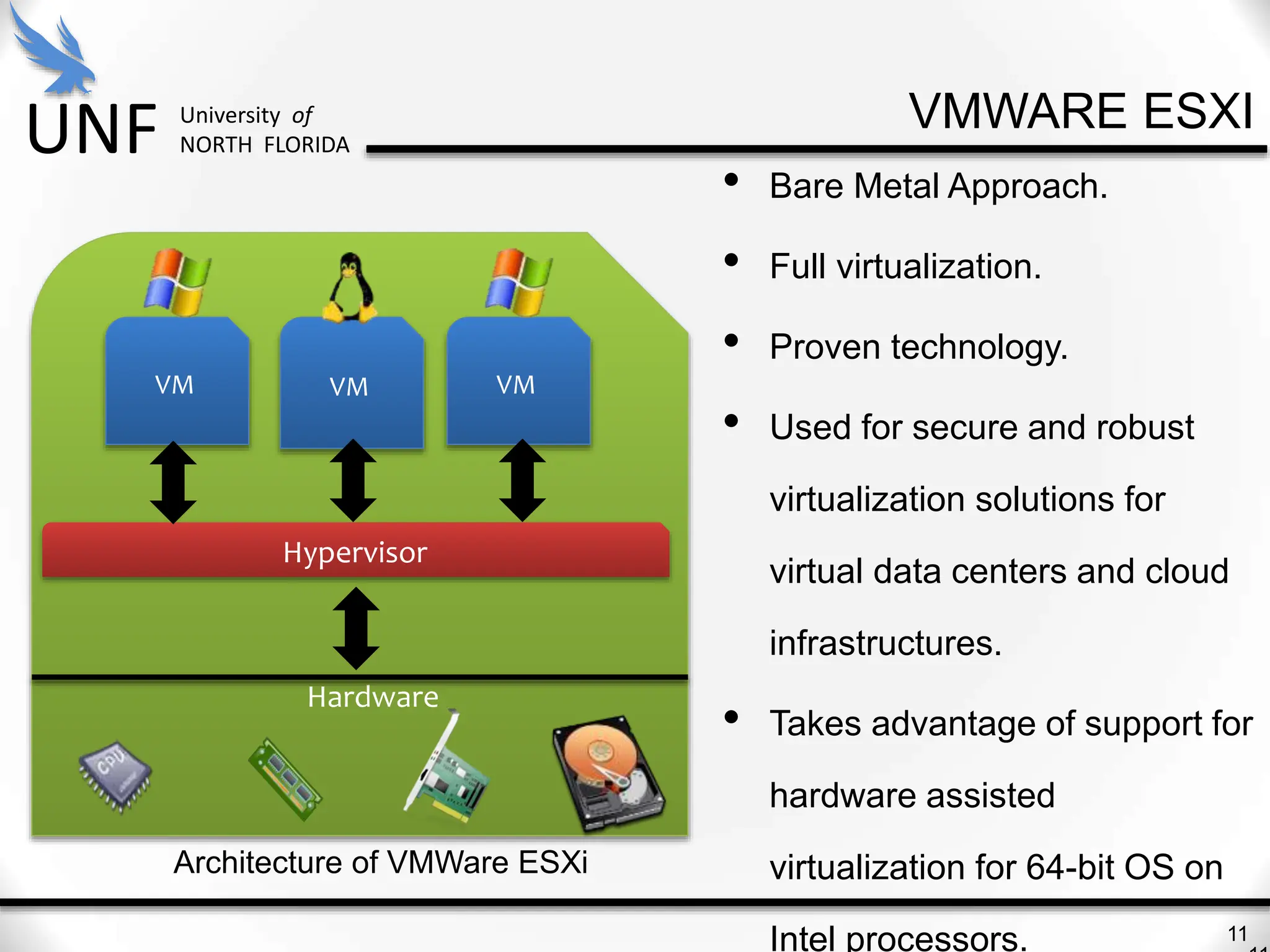The document discusses virtualization as a key technology for cloud computing, enabling efficient resource management by creating virtual machines on a single physical server. It outlines the benefits of virtualization, including reduced costs, improved availability, and efficient resource utilization, alongside various virtualization approaches such as full virtualization, para virtualization, and different types of hypervisors. Additionally, it highlights specific technologies like VMware and Xen, and their roles in enabling virtualization in data centers.
